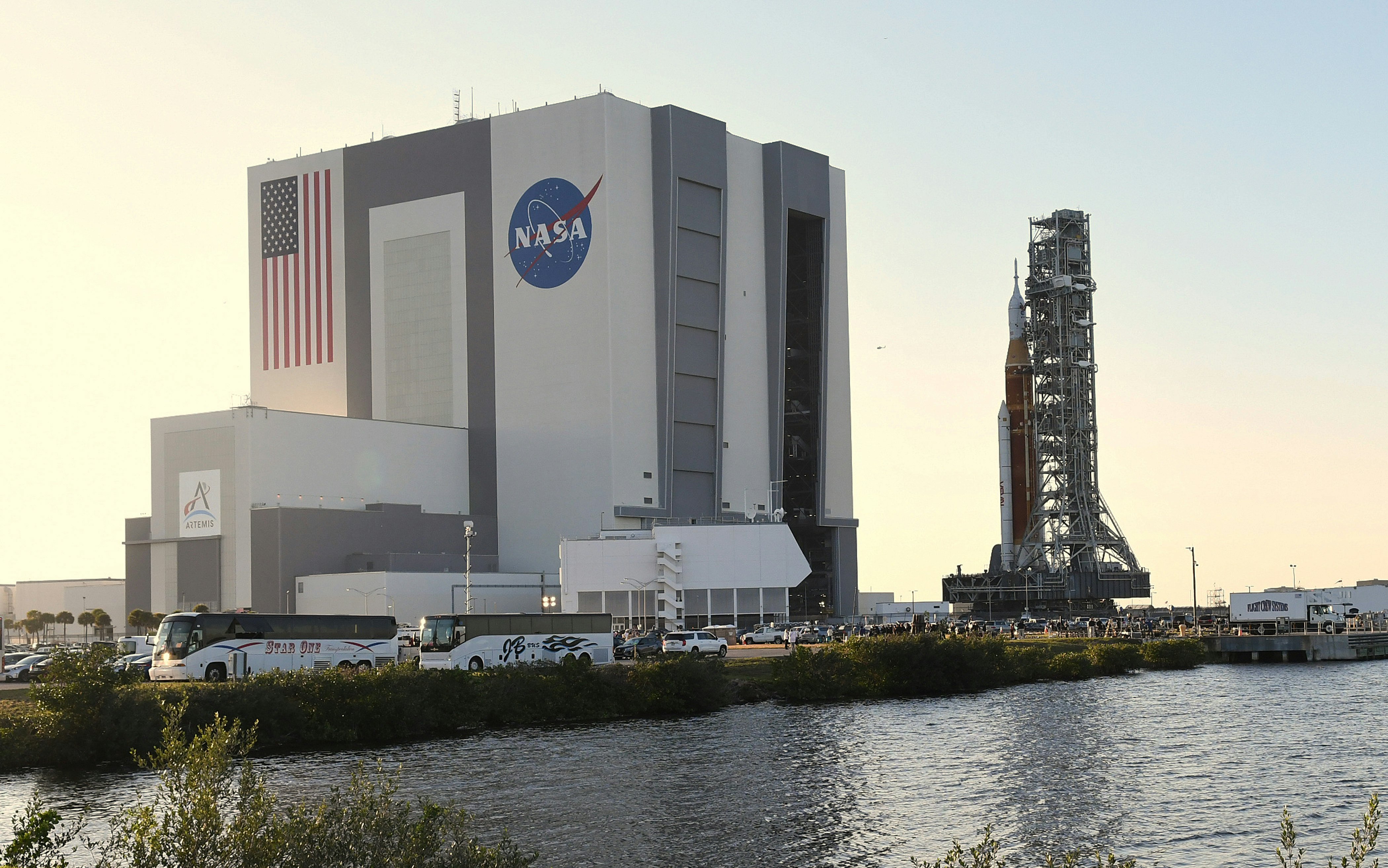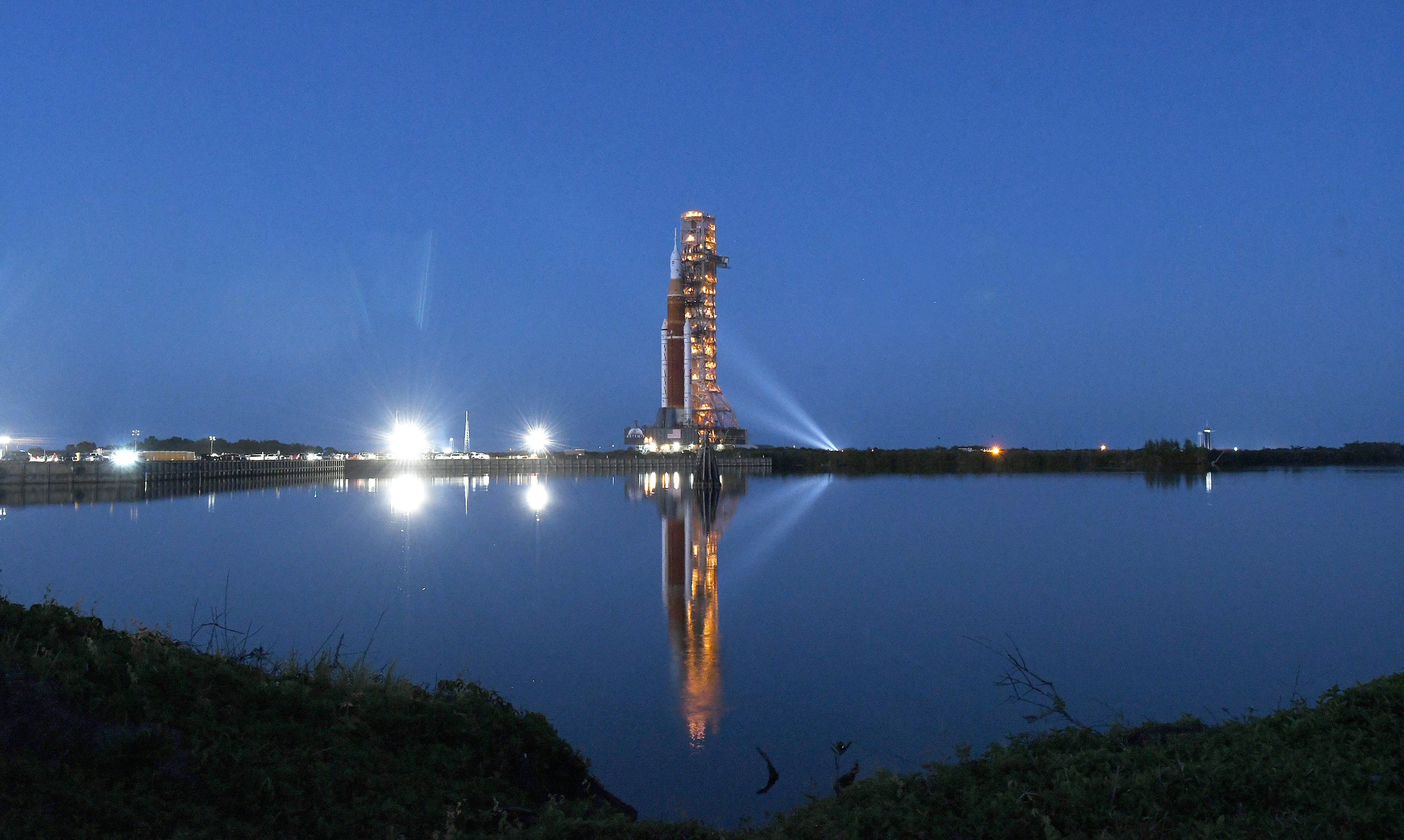
NASA will perform a modified version of the final ground test its Moon-rocket needs to ace in order to get a real launch date.
All this month, engineers have been evaluating the Space Launch System (SLS) rocket, which is is currently sitting at the space agency’s Kennedy Space Center in Florida. The wet dress rehearsal is the final leg of the SLS’s journey to becoming flight-ready, and when it takes off, it will fly the Artemis-1 mission to the Moon and demonstrate the SLS’s next-generation capacity. If all goes well with Artemis-1, the Artemis program can begin preparations to carry humans to the lunar environment for the first time since the Apollo program.
But first, it must pass the wet dress rehearsal.
Why it matters — NASA is planning a wet dress rehearsal for Thursday (April 14). This will be the agency’s third attempt — the first two were on April 3 and April 4 — and this likely won’t be the last.
While the SLS team was troubleshooting a helium leak during post operations of last week’s second wet dress rehearsal, they noticed another problem. A pressure vessel in the rocket’s upper stage was giving an unexpected reading. So, while this is addressed, the rest of the rocket will undergo a repeat wet dress rehearsal on Thursday to test out the fuel-loading systems that would deliver enough power to send the rocket into space, around the Moon, and back.
The upper stage portion of the rocket will not be tested on Thursday.
After this third wet dress rehearsal test, engineers will inspect the flight systems even further. When SLS eventually aces the wet dress rehearsal, and NASA personnel are confident with the data they’ve collected, they will select a launch date for the Artemis-1 mission.

Here's the background — SLS leadership is emphasizing that the last two wet dress rehearsals have accomplished many things.
According to an April 5 space agency blog post, NASA personnel were able to power up the Orion crew capsule – which will fly empty for Artemis-1 – in launch configuration, check software across the SLS rocket, drain the liquid oxygen and liquid hydrogen propellant after the test, and more.
The upper stage won’t be part of Thursday’s test because of a check valve. During a reverse-flow check, it should stop the flow of material because it is a one-way valve. But it didn’t stop the flow of material, so NASA engineers knew the hardware was faulty.
Check valves are small, about one and an eighth inch in diameter. It’s malfunction was an “unexpected failure,” John Blevins, SLS chief engineer at NASA Marshall Space Flight Center in Huntsville, Alabama, said during a conference call on Monday about the upcoming test.
“It’s a very small part, you can put it in your pocket…. we use check valves in just about every aerospace or even non-aerospace application I can think of,” he said.
“But when you have a failure like this, you stop and evaluate why it's doing that. We’ll be able to do that when we get to it. This check valve is in a place that doesn’t have great access on the launch pad, but once we get back to the [Vehicle Assembly Building], it’s pretty easy to get to… easy to get to, easy to change out.”
What this means for the future — NASA leadership is emphasizing that these numerous tests don’t mean the overall rocket and its systems are in need of severe repair.
“The mega-Moon rocket is in great shape,” said Mike Sarafin, Artemis mission manager at NASA Headquarters. “We’re treating it very carefully and therefore we are going to limit a few of the objectives that were coming up on Thursday.”







